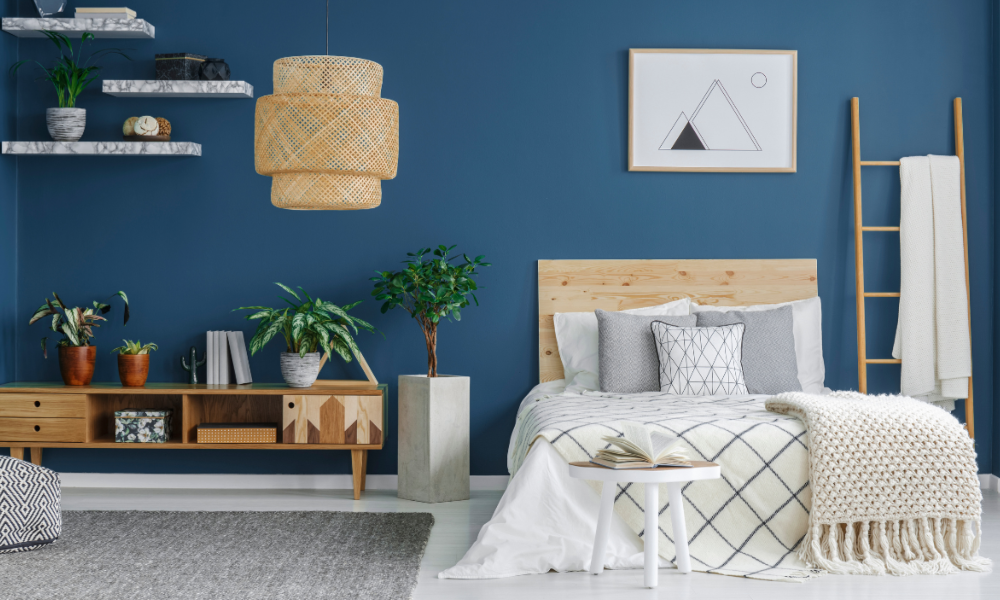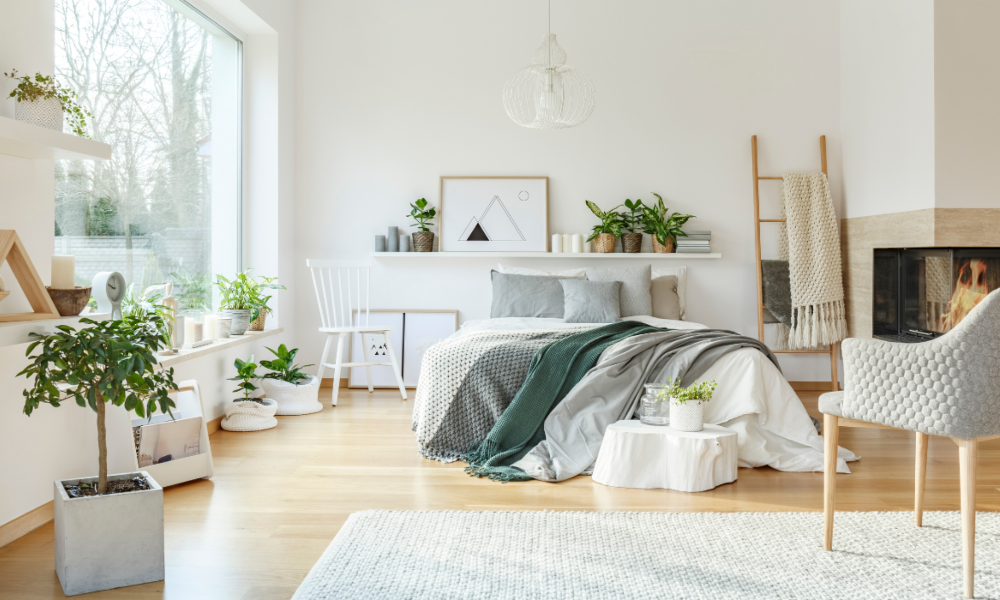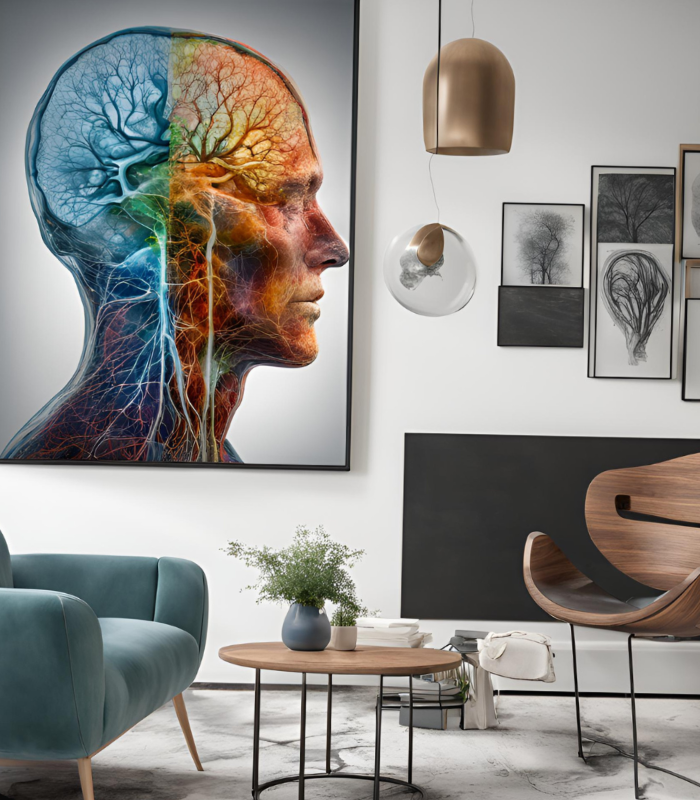By Shannon Harris, Fuse Living Interiors and Homeself Neurodesign
Generally speaking, when talking about neuroscience, we look at the interplay of cognition, emotion, and behavior — how neural networks weave themselves through different brain regions, influencing the way we show up from these cognitive, emotional, and behavioral standpoints. The study of neuroscience seeks to understand what types of stimuli activate which neural networks.
For the course of the last year, I’ve been designing a framework to combine neuroscience and design in order to enhance mental well-being for my clients. In my work, I seek to understand how various shapes, colors, textures, sounds, and tastes are registered and processed in our brain and in which regions. But whether you hire a professional designer or not, it can be fascinating — and important — to understand the way your environment impacts you on a daily basis.
 Has something kicked off your fight or flight response? Did something trigger a release of serotonin, helping you to relax? These are the questions to ask when you feel yourself responding in a certain way in various environments. What we consciously feel or perceive can sometimes vary based on our physiological responses to the environment around us. And as the designer of your space, you hold the key to achieving just the right amount of sensory inputs for your daily goals and emotional balance. Too little environmental stimulation, and you’ll be bored, unmotivated, and have a lack of focus. Too much environmental stimulation, and you’ll be a short-fused stress ball wandering around without ever getting a full dose of rejuvenation. Understanding how your brain responds to various stimuli can allow you to craft a space that promotes relaxation, focus, and creativity, among many other “states of being”.
Has something kicked off your fight or flight response? Did something trigger a release of serotonin, helping you to relax? These are the questions to ask when you feel yourself responding in a certain way in various environments. What we consciously feel or perceive can sometimes vary based on our physiological responses to the environment around us. And as the designer of your space, you hold the key to achieving just the right amount of sensory inputs for your daily goals and emotional balance. Too little environmental stimulation, and you’ll be bored, unmotivated, and have a lack of focus. Too much environmental stimulation, and you’ll be a short-fused stress ball wandering around without ever getting a full dose of rejuvenation. Understanding how your brain responds to various stimuli can allow you to craft a space that promotes relaxation, focus, and creativity, among many other “states of being”.
Cognitive Load and Your Response to Your Environment
 Let’s look at cognition – we’ve all experienced a time when we have felt overwhelmed, where one small annoyance can send us into a tailspin. This is usually because our cognitive load is tapped out and can’t absorb any further input. So let’s dissect this for a minute. There are conscious actions and thoughts that take place in everyday life that add to our cognitive load for the day, and there are also subconscious inputs that add to the load. Consciously adding to our finite cognitive limit are things like focused work, engaged conversation, housework, parenting, and so on. Sneaky little inputs that make their way into our subconscious are urban noises, color pops, poor lighting, clutter, poor air quality, and uncomfortable furniture, for example. These subconscious factors create more demand on cognitive resources, making it harder to thrive. Now, are you ready for this? We are only conscious of 5% of sensory inputs. Five percent! So that leaves a large 95% of what we take in each day to our subconscious mind — meaning we don’t even know it’s happening. You can start to see why paying attention to your physical environment can have a big impact on your functioning.
Let’s look at cognition – we’ve all experienced a time when we have felt overwhelmed, where one small annoyance can send us into a tailspin. This is usually because our cognitive load is tapped out and can’t absorb any further input. So let’s dissect this for a minute. There are conscious actions and thoughts that take place in everyday life that add to our cognitive load for the day, and there are also subconscious inputs that add to the load. Consciously adding to our finite cognitive limit are things like focused work, engaged conversation, housework, parenting, and so on. Sneaky little inputs that make their way into our subconscious are urban noises, color pops, poor lighting, clutter, poor air quality, and uncomfortable furniture, for example. These subconscious factors create more demand on cognitive resources, making it harder to thrive. Now, are you ready for this? We are only conscious of 5% of sensory inputs. Five percent! So that leaves a large 95% of what we take in each day to our subconscious mind — meaning we don’t even know it’s happening. You can start to see why paying attention to your physical environment can have a big impact on your functioning.
Personal Experiences Impact Your Personal Space
When we look at emotional responses to our environments, visual and auditory stimuli also play a crucial role in emotional processing. Through these senses, we interpret social and environmental contexts, recognize facial expressions, and assess threats or opportunities. Our sense of taste actually plays a role in emotional processing and memory. And although as humans, there are some ways in which we may all respond to the same stimuli due to evolution, there are also ways in which we respond differently due to lived personal experience. Knowing how to decipher what is human response and what is your unique response is also a factor in how we can design a space to foster our well-being and healing. Considering your own personal experiences are key to designing a space that can influence healing, restore homeostasis, and even diminish trauma responses.
 When working to address anxiety or trauma through your environment, the first thing to do is reduce perceived threats in the environment. Through our evolution, there are certain textures, shapes, and noises that we may perceive as threatening — like rigid angles that stimulate the subconscious mind to think of thorns or sharp teeth. The responses to these types of “threatening” stimuli heighten our arousal, making us uncomfortable in a state of hypervigilance.
When working to address anxiety or trauma through your environment, the first thing to do is reduce perceived threats in the environment. Through our evolution, there are certain textures, shapes, and noises that we may perceive as threatening — like rigid angles that stimulate the subconscious mind to think of thorns or sharp teeth. The responses to these types of “threatening” stimuli heighten our arousal, making us uncomfortable in a state of hypervigilance.
Once we remove the sensory threats, we want to introduce positive stimuli. We can introduce many shapes, patterns, colors, and textures that tantalize and positively awaken our senses. Creating space for the mind to wander and allowing these sensory stimuli to seep in has just created a new state — and space — for us to sink into with confidence, safety, and security.
Finally, it’s the personal touches that you put on your space that speak to your innermost desires, memories, and interests that can take your mood to the next level. The conscious and subconscious mind both benefit from the things that make you feel happy, safe, and truly at home.





